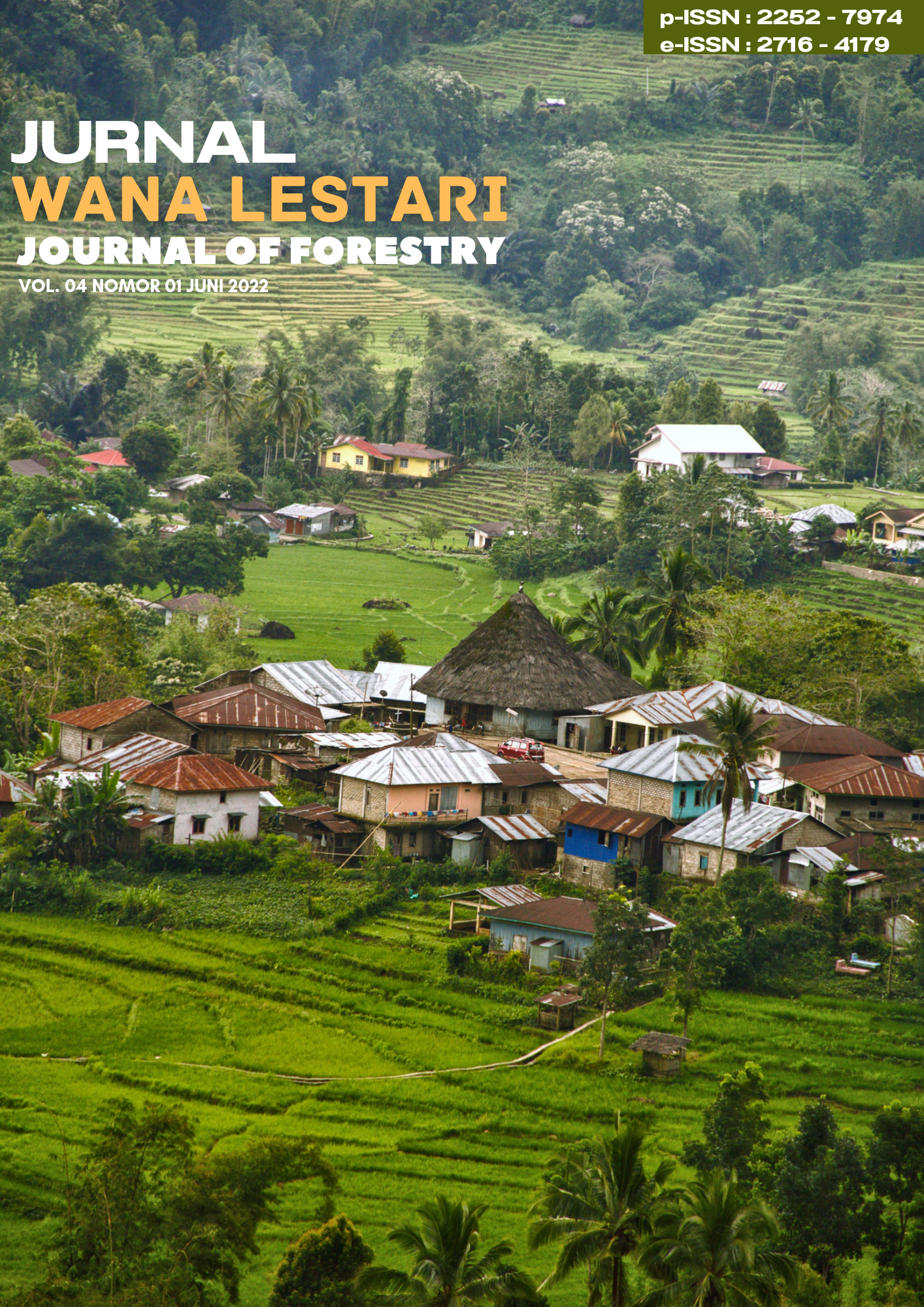HABITAT CHARACTERISTICS OF THE FLORES EAGLE (Nisaetus floris) IN THE OTOSESO TRADITIONAL FOREST AREA, WOLOJITA DISTRICT, ENDE REGENCY, EAST NUSA TENGGARA PROVINCE.
Abstract
This study was conducted to determine the Habitat Characteristics of the Flores Hawk Eagle (Nisaetus Floris) in the Otoseso Indigenous Forest Area, Wolojita Sub-District, Ende Regency, East Nusa Tenggara Province. This research was conducted from March to April 2021. The analysis of the habitat of the Flores Hawk Eagle (Nisaetus floris) used a vegetation analysis approach, the level of habitat use and observations of nesting characteristics. The behavior of the Flores Hawk Eagle (Nisaetus floris) was observed directly at the observation spot to describe its daily activities. The results showed that the trees used for nesting sites were the Jita (Alstonia scholaris), Fai (Paraserianthes falcataria) and Kemiri (Aleurites mollucana) tree species, which are sticking trees in their habitat. The Flores Hawk Eagle (Nisaetus floris) used canopy space A (I and II) to build nests, while for perching trees that have been identified are the banyan (Ficus benjamina), weru (Elaecarpus sphaericus), kapok (Ceiba pentandra), lamtoro gung (Leucaena leucocephala SubSp. glabrata) and Nimbah (Melia Azidarach). Flores Hawk Eagle (Nisaetus floris) uses crown spaces A and B (I and II) for perching behavior and stalking prey. In this section of the canopy the Flores Hawk Eagle (Nisaetus floris) usually perched on a flat tree trunk perpendicular to the main branch and is of medium size. The daily activity of the Flores Hawk Eagle (Nisaetus floris) which has the highest presentation is perching at 41%, flying (soaring and gliding) by 28%, voice by 22% and hunting by 22%.
Downloads
Copyright (c) 2022 Wana Lestari

This work is licensed under a Creative Commons Attribution-ShareAlike 4.0 International License.

 Hermanus Carvin Worho(1*)
Hermanus Carvin Worho(1*)







